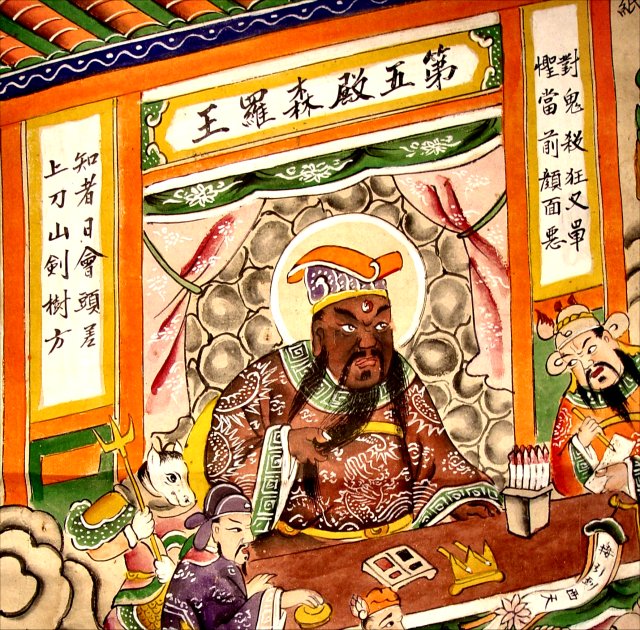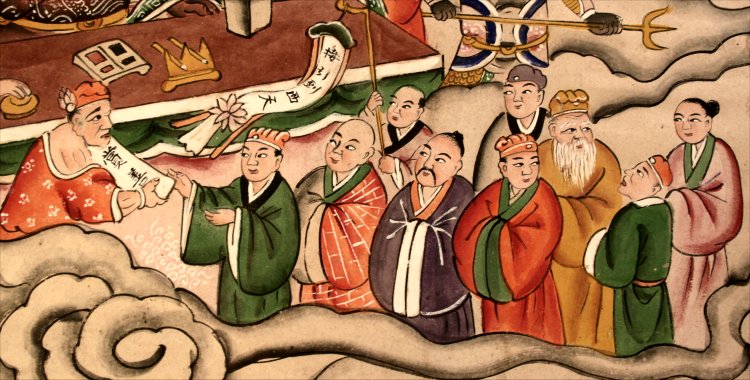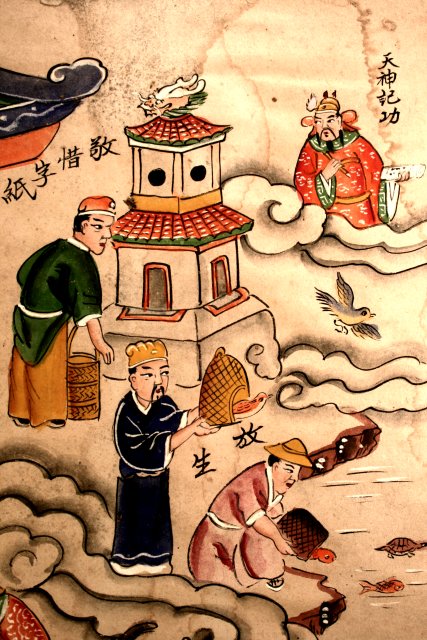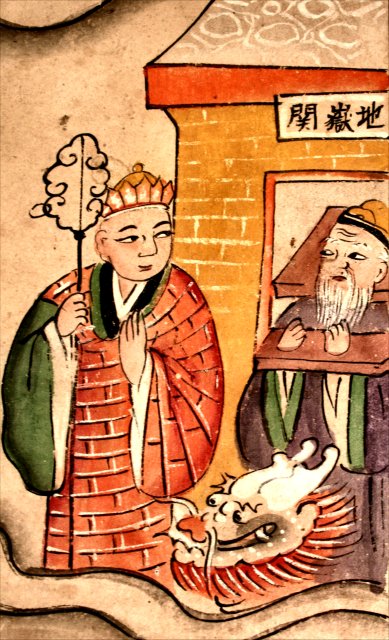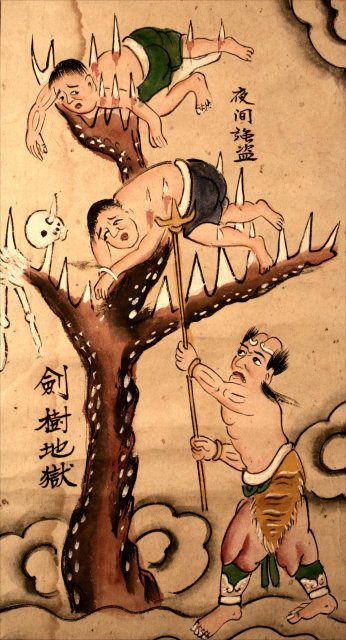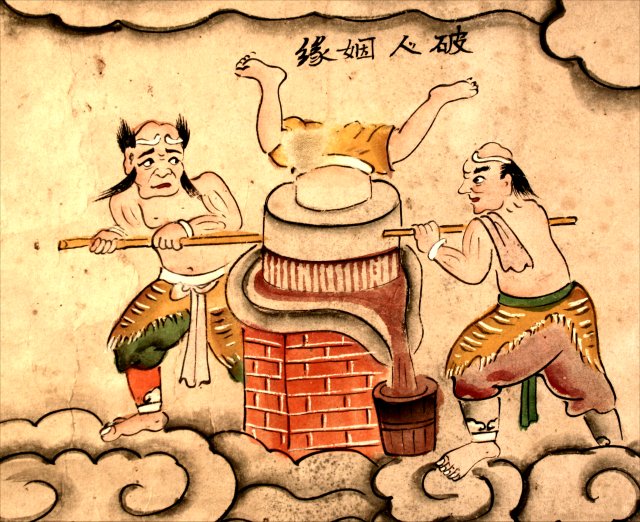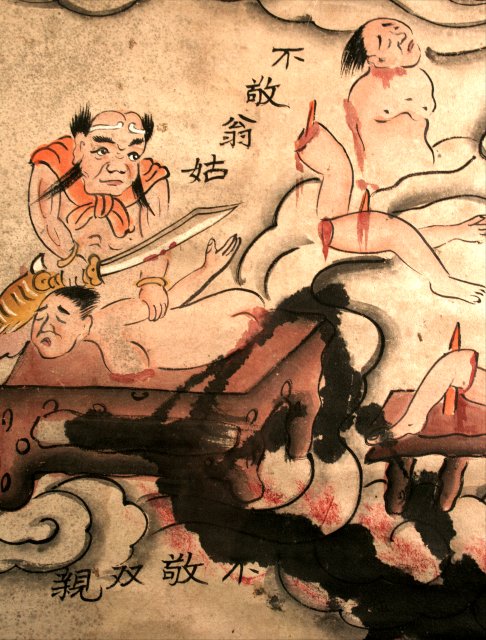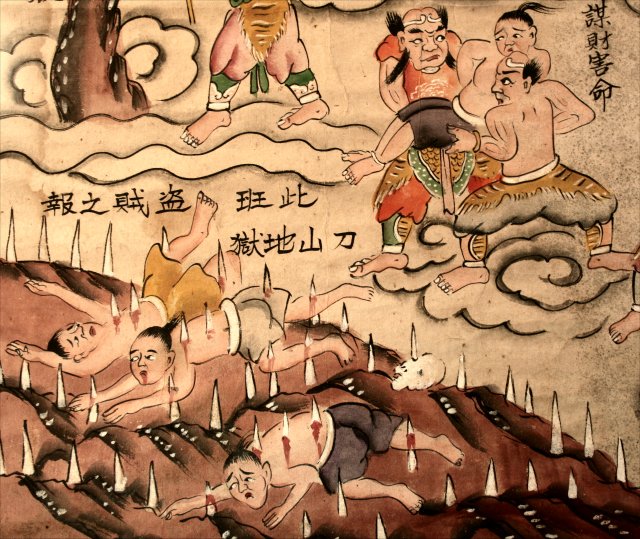|
Fifth court - King Yama |
| Large image |
| Previous court |
| Next court |
| Main Gates |
| Comments |
| First court |
| Second court |
| Third court |
| Fourth court |
| Fifth court |
| Sixth court |
| Seventh court |
| Eighth court |
| Ninth court |
| Tenth court |
The arrangement of the ten kings: Cyclic versus tablet schema
Typically depicted with a darkened visage, King Yama or Yanluo is the most famous of the ten judges in hell, having ruled the realm of death as early as pre-Buddhist India. Hence the question arose as to why he only ruled over the fifth court instead of the first, the last or indeed all ten. Some versions of the Jade registers begin their description of the fifth court with Yama himself explaining how his compassionate attitude made him unsuitable for the stern justice meted out in the first court, and so he moved (or was moved) here to the fifth. Modern secondary sources follow this explanation to explain his demotion here.
However, this so-called "demotion" is (in my opinion) based on a misunderstanding. There are two basic systems that relate the ten magistrates to one another. One is geographic and cyclic, assigning the judges paricular cooridnates on a map of the underworld -- and in this case literally under the world. Each hell is laid out below Patala or Wojiaoshi 沃燋石 which, in some texts dating back to the sixth century, is the southern hemisphere as opposed to Jambudvipa which is the northern hemisphere. When people die, they enter the first court which is at the far west of Patala, the flipside of our yang world. The good then go off to the ultimate Western Paradise, but the rest proceed to the eight courts that form a ring within (or beneath) Patala, starting with the second court in the south, the third in the southeast and so forth in a counter-clockwise circle. They finish their tortures at the ninth court in the southwest and then proceed to the tenth court in the far east, ready to return to the other side of the world, back to the yang world of the living. (This system results in many different implications for the names of the judges and particular descriptions of the hells, not to be discussed here.) The Jade registers follow this system.
The hell scrolls follow a different system, namely one that mimics tablets in a shrine. When arrayed in a temple dedicated to hell or in a temporary funeral shed, the first five begin on the right side with the first nearest to the entrance and the fifth closest to the altar (or coffin, or statue of Dizang), and the second five continue on the left side, the sixth closest to the altar and the tenth back nearest to the entrance. (Note in this set of hell scrolls how the judge is positioned to the right of center in the first five and to the left of center in the second five because they would have been hung to two rows opposite of one another.) Parallel to the tablets in an ancestral hall, pride of place is reserved for the scrolls in the back, closest to the altar. In sum, Yama as fifth is in the most important position, next to the coffin or altar in the middle. Not coincidentally in this layout, the sixth position is made special by becoming the entrance to Avici hell, the deepest and worst of all purgatories. (For Avici's association with the sixth hell, see for example the inscriptions at the Song dynasty cliff face at Dazu or the scripts of Mulian operas. In cyclic systems such as the Jade registers, Avici is instead accessed at the ninth hell at the end of the torture courts.)
Hence Yama is not "demoted" to the fifth hell. (Yet it must here be confessed that the differing cyclic and tablet schema are strictly my own reading of the available evidence.)
